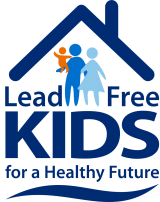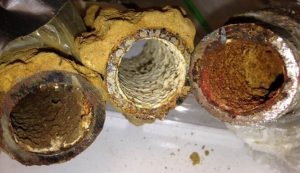National Lead Poisoning Prevention Week—Lead-Free Kids for a Healthy Future
 October 23-29 is National Lead Poisoning Prevention Week 2016. Established in 1999 by the U.S. Senate, National Lead Poisoning Prevention Week (NLPPW) occurs every year during the last week in October and is now supported by the U.S. Environmental Protection Agency (EPA), the Centers for Disease Control and Prevention (CDC), the U.S. Department of Health and Human Services (HHS), the U.S. Department of Housing and Urban Development (HUD), and the World Health Organization (WHO). This year’s NLPPW theme of “Lead-Free Kids for a Healthy Future” underscores the importance of protecting our future by educating the public about the dangers and sources of lead poisoning and what can be done to prevent it. While lead-based paint is arguably the most common and hazardous source of lead exposure for young children, lead-contaminated drinking water has recently come under heavy scrutiny as an additional and very serious source of lead poisoning.
October 23-29 is National Lead Poisoning Prevention Week 2016. Established in 1999 by the U.S. Senate, National Lead Poisoning Prevention Week (NLPPW) occurs every year during the last week in October and is now supported by the U.S. Environmental Protection Agency (EPA), the Centers for Disease Control and Prevention (CDC), the U.S. Department of Health and Human Services (HHS), the U.S. Department of Housing and Urban Development (HUD), and the World Health Organization (WHO). This year’s NLPPW theme of “Lead-Free Kids for a Healthy Future” underscores the importance of protecting our future by educating the public about the dangers and sources of lead poisoning and what can be done to prevent it. While lead-based paint is arguably the most common and hazardous source of lead exposure for young children, lead-contaminated drinking water has recently come under heavy scrutiny as an additional and very serious source of lead poisoning.

Lead contamination in drinking water has long been a problem, but it is now receiving the attention it deserves as a direct result of the catastrophe that took place in Flint, Michigan earlier this year. When Flint switched its water supply from Detroit to the Flint River, proper corrosion control measures were not implemented. The river water corroded old lead pipes, leaching lead into the drinking water. As a result, it is estimated that six to twelve thousand Flint children have been exposed to high levels of lead in their drinking water. But they are not alone. In the United States, over 500,000 children have elevated lead levels in their blood, and it is estimated that between seven and ten million American homes still receive their drinking water from lead service lines. In addition, many homes constructed prior to 1986 also have lead in their faucets, fixtures, and solder.
While elevated lead levels in the blood stream cause health issues at any age, these problems are most significant in young children under the age of six whose brains are still developing. Some of the health concerns associated with lead exposure are as follows:
- Decreased IQ
- Slowed growth
- Inability to pay attention, hyperactivity, and ADHD
- Learning disabilities and developmental delay
- Anemia
- Tooth decay
- Decreased bone and muscle growth and poor muscle condition
- Damage to the nervous system, kidneys, and/or hearing
- Speech and language problems
 Lead in drinking water cannot be detected through taste or smell, and the only way to know for certain if your drinking water has elevated lead levels is to have your water professionally tested. Typically, lead pipes are found in homes that were built prior to 1986 and in older cities. Older homes with private wells are also at risk of having lead in drinking water. While complete removal of all lead service lines, pipes, faucets, and fixtures is the most effective way to bring lead to safe levels in drinking water, it can also be prohibitively expensive. Therefore, the EPA has recommended the following steps to reduce lead in your drinking water:
Lead in drinking water cannot be detected through taste or smell, and the only way to know for certain if your drinking water has elevated lead levels is to have your water professionally tested. Typically, lead pipes are found in homes that were built prior to 1986 and in older cities. Older homes with private wells are also at risk of having lead in drinking water. While complete removal of all lead service lines, pipes, faucets, and fixtures is the most effective way to bring lead to safe levels in drinking water, it can also be prohibitively expensive. Therefore, the EPA has recommended the following steps to reduce lead in your drinking water:
- Call your water provider to learn about the lead levels in your system’s drinking water, and to find out if the pipe that connects your home to the water main (e.g. the service line) is made from lead.
- Use only cold water for drinking, cooking, and making baby formula.
- Remember, boiling water does not remove lead from water.
- Run water for 30 seconds to two minutes before drinking it, especially if you have not used your water for a few hours.
- Regularly clean your faucet’s screen (also known as an aerator).
- If you use a filter certified to remove lead, don’t forget to read the directions to learn when to change the cartridge. Using a filter after it has expired can make it less effective at removing lead.
During NLPPW, many participating communities and organizations offer educational and awareness events as well as free blood tests. For information on NLPPW events, contact your local health department, which can be found here. While lead poisoning is a serious concern for everyone, young children are most at risk, which is why NLPPW 2016 is focusing on our nation’s children. Through public education, investing in infrastructure, and best practices, together we can ensure that our nation has “Lead Free Kids for a Healthy Future.”
